#India’s spiritual role
Explore tagged Tumblr posts
Text
Shocking Predictions For The Next 10 Years (Tone: 310)
Sri M predicts rising environmental challenges, but a youth-driven spiritual awakening may avert disaster. #SpiritualAwakening #ClimateCrisis #Predictions
Published on March 14th, 2023 Sri M’s Shocking Predictions For The Next 10 Years ABOUT THIS VIDEO: The video titled “Sri M’s Shocking Predictions for the Next 10 Years” features spiritual teacher Sri M discussing various challenges humanity faces and offering insights into what may unfold over the next decade. Key topics include environmental degradation, such as rising sea levels and…

View On WordPress
#2020s challenges#climate change#climate crisis#earthquakes in Himalayas#environmental awareness#environmental disasters#global conflict#global spiritual trends#India’s influence#India’s spiritual role#melting ice caps#natural disasters#nuclear war prevention#nuclear weapons#purification decade#sea levels rising#Spiritual Awakening#spiritual growth#spiritual reformation#spirituality#Sri M predictions#Vedic traditions#World War prediction#young people and spirituality#youth spirituality
0 notes
Text

miku as my babaylan oc who is trans
babaylan research dump (mostly from memory so it’s gonna be pretty distilled):
babaylans are the lead shamans of indigenous filipino tribes (mostly northside, the luzon and visayas area, rip mindanao) that are responsible for practically every spiritual aspect of the community. only women were allowed to be babaylans, since, according to local mythos, women had more affinity to the spiritual realm.
however, what i find notable about babaylans is that their requirements also include transgender women! one does not simply choose to become a babaylan, instead, she has to train under a senior and go through a ritual before the anito (local spirits) deemed her worthy of representing them. the only exception is if a girl went through something that confirmed to the people immediately that she had anito approval. notably, trans women were also among the subset of girls who got to skip the selection process. this is my speculation but i like to think it’s probably because the locals considered the realisation that one was trans as anito approval. assigned female by duende
usually, i’m very wary of putting modern queer labels onto historical figures (we don’t know how they would identify now), but spanish colonial records noted that amab babaylans, outside of their ritualistic roles, would live like women (down to having husbands), were treated like women and were simply considered women barring the ability to bear children. if she walks like a woman, talks like woman…that didn’t stop the spanish settlers from misgendering them, though.
that being said, in present day, while there are still people out there practising babaylan rituals, they’re mostly men who only take on feminine appearances during the rituals, and live as men in their regular lives. this stems back from the spanish colonial period and we are not getting into that now this read more is long enougb as it is
personally i find this fascinating because, at least for what i was able to look into, trans babaylans were the only time i could look at a historical indigenous gender identity and definitively refer to them as lgbt. most other indigenous identities are either meant to be their own thing (not native american, but i remember reading discourse over whether two-spirit should be considered nb or as its own thing) or far too complex to be described with the western modern lgbt terms (although they generally present feminine, the hijras from india classify themselves as a separate third gender and worship specific deities from hinduism). maybe i haven’t looked hard enough but it’s so interesting to hear about old communities where women, and especially trans women, were basically the most important figures
anyway sorry for rambling. sometimes i like to ramble.
554 notes
·
View notes
Text
ATSV Fun Fact!! - Mumbattan Cultural Details
Gayatri & Inspector Singh follow the Sikh Religion

Have you ever heard of Punjabi Sikhs?
If you don't know - Sikhism is a religion that originates in northern India, specifically Punjab.
The turban Gayatri's father wears - along with his last name 'Singh' implies that her father is most likely a Punjabi Sikh.
I notice this the first time watching ATSV and was like 'wow that's so cool :)'
It only hit me today that 'Oh wait I don't think a lot of people know about this very-specific, rarely-mentioned religion maybe i should say something,'
And because I LOVE yelling about world culture, LET'S GO!!!
[a SHORT essay where I explain the basics of Sikhism, a religion built on equality and justice. And details in The Singhs design, and exactly why Sikh Representation matters]
So What's Sikhism about?
Often mistaken for Muslims - Sikhs are actually a non-Abrahamic religion, with 20 million followers worldwide.
But even with so many visible practicing members, most people know very very little about this beautiful religion!
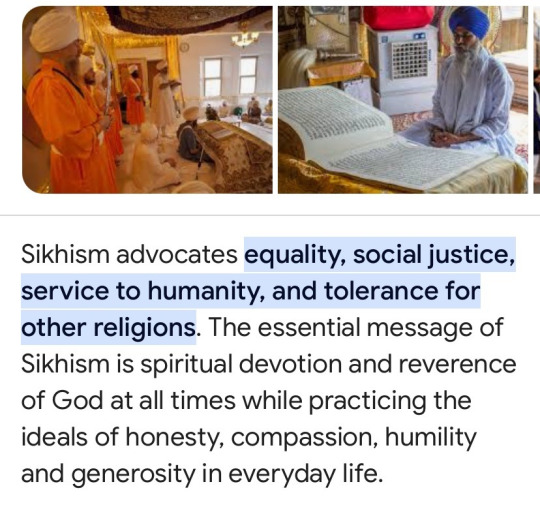
Sikhs believe in equality and unity - and defending the oppressed. Their book of faith, The Guru Granth Sahib Ji, is called 'Guru' for a reason - Sikhs see the book as not just a code of conduct, but as a living, breathing teacher for every practicioner;
From Wikipedia on Guru Granth Sahib: Sikhs since then [1708] have accepted the Guru Granth Sahib, the sacred scripture, as their eternal-living guru, as the embodiment of the ten Sikh Gurus, the highest religious and spiritual guide for Sikhs. It plays a central role in guiding the Sikh's way of life.
The Guru Granth Sahib is the spiritual leader of Sikhism, and it's treated as such.

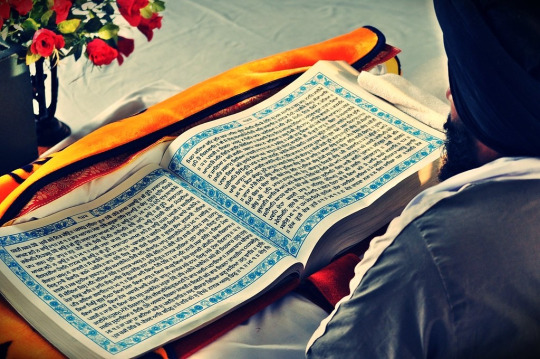

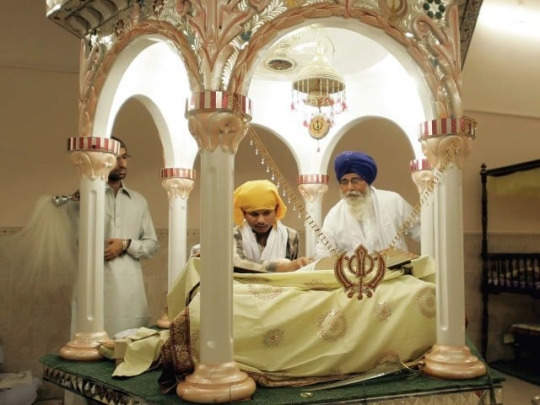
That's why in Gurdwaras - their place of worship - it's treated as such, being clothed and held in ornate structure, constantly fanned throughout it's readings (the fan you can see in the left picture).
They believe that by following the Guru Granth Sahib Ji, they can cultivate compassion, peace, and harmony in their communities, while diminishing 'Mara' - concepts like hatred or violence.
Sikhs believe that every Sikh should revere themselves as champions of unity. And because of this many Sikhs have the same last name -
Kaur for women (Meaning Princess) and Singh for men (Meaning Lion).
Having the same last name also does away with the Indian caste system, making it another point of equality.
In ATSV Gayatri last name is Singh. However from my understanding, her name would most likely be Gayatri Kaur in reality.
I think they kept her last name as Singh as a deliberate choice to keep her initials as GS, like Gwen Stacy.
So is Gayatri Sikh?
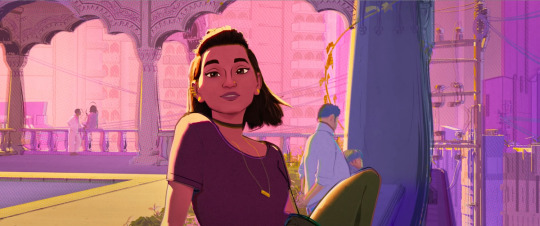
Maybe - most likely.
But we can't be sure. Mainly because of her hair.
Gayatri has a short bob haircut, and while that might not seem like it matters, it does!
In Sikhism there are the '5K's - different aspects Sikhs wear to show their faith.
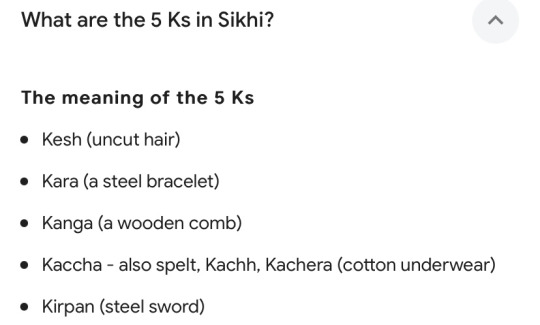
Notice the first one?
'Kesh' is the practice of leaving ones hair completely uncut. That's why you may see a lot of Sikh men with long, long beards!
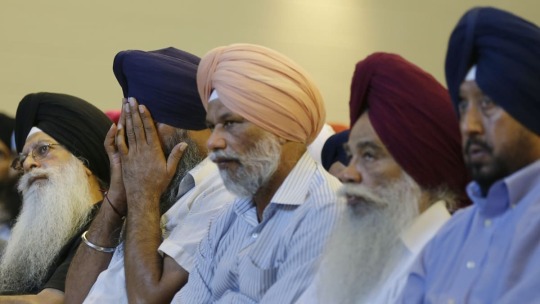
And hence, the large turbans.
It's done as respect for God's creation - leaving it unaltered.
[Fun Fact! - Rastafarians, a Jamaican religion, also don't cut their hair for this reason. Think Bob Marley. Rastas call God - Jah]
So, Gayatri having short hair means she doesn't keep Kesh.
However, Sikh is a super accepting and open religion, and it's main focus is on acceptance of difference, not conformity - so she could entirely follow the faith without doing all of any of the 5Ks.
Also, if you're curious about the steel sword K - Kirpan, yes that's a thing!

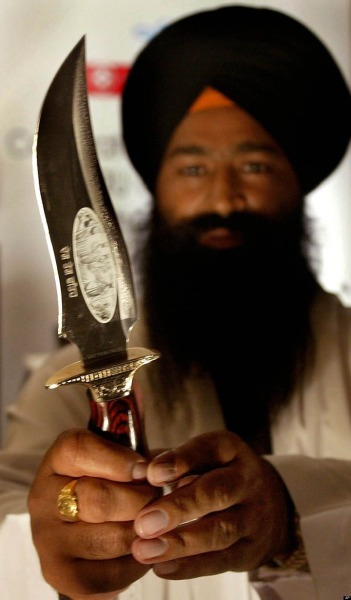
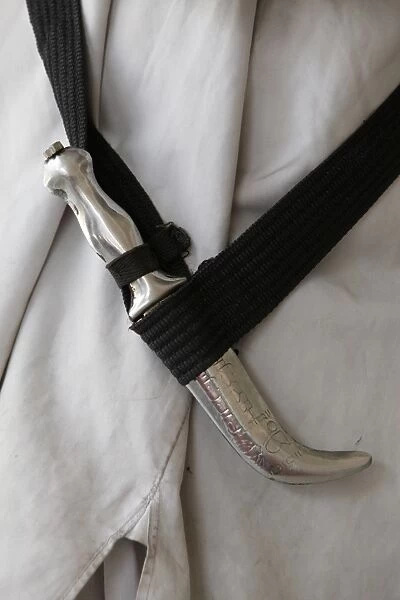
Sikhs of all genders are encouraged to carry a small ceremonial blade with them.
Instead it's a symbol of the commitment to fighting for what's right - and defending those who cannot defend themselves.
A Kirpan can ONLY be used to defend the life of yourself or others, which is incredibly rare.
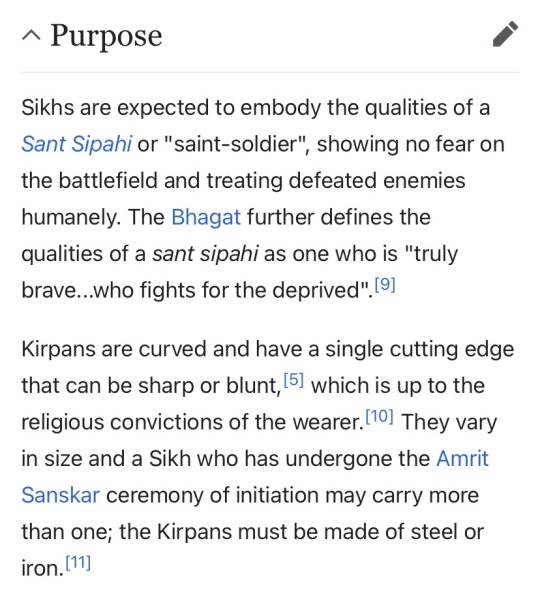

Why is this all so rad, cool, and important?
If you haven't noticed by now, Sikhism is a religion driven by justice. Not just in theory, but in really life as well.
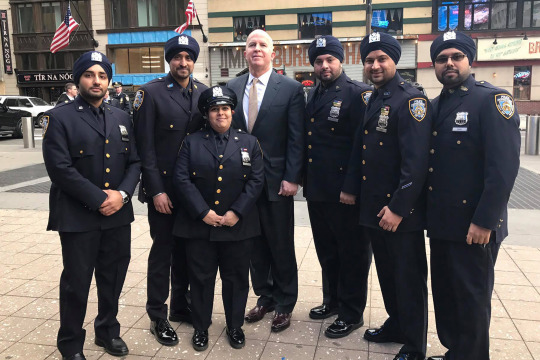

That's why you may see many Sikh police officers and politicians, even here in the West. Most of them wearing the emblem on their turbans.
In fact, Canada has SO MANY Sikh politicians, that in 2019 they elected 18 of them.
For centuries Sikhs have been dedicated to justice, and developing systems of support, whether that be political involvement or feeding those in need.
The biggest Gurdwara (a place of Sikh worship) The Golden Temple feeds over 100,000 people A DAY.
For FREE.
It's a practice called Langar. A communal meal anyone can enjoy. And of course, Langar food is vegetarian.
Making Inspector Singh a Sikh - and showing him saving people and being warm to his daughter on screen is great representation for a community so often overlooked! Despite the fact they are over 20 million practicing Sikhs.
It's a great detail for Indian and Punjabi representation in specific. It accurate shows their beliefs and commitment towards helping others, no matter the cost.
And from what we can tell, this choice came later in development. We know this because ALL of his concept art shows him with a turban, not keeping Kesh.
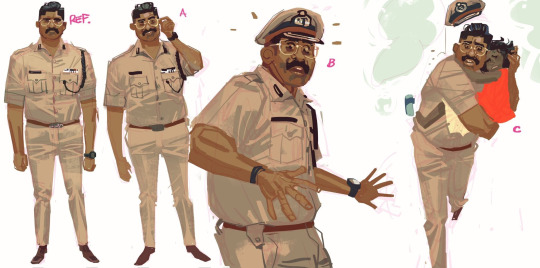
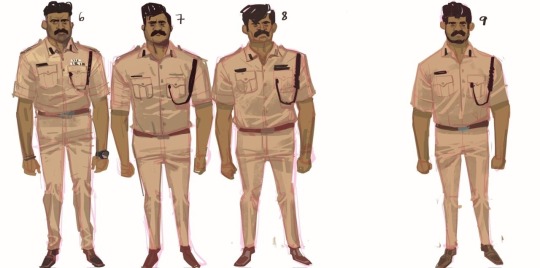
It seems like someone later on down the line said 'Wait if his name is Singh I think he's Sikh and if he's Sikh then we're gonna have to redesign him and make that obvious oops'.
That, dear audience, is why you always have an Anthropologist in the writing room. Or some amateur anthropologist like me :)
-------------
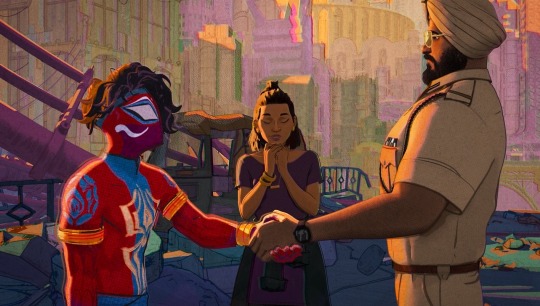
I hope you enjoyed reading this, I really enjoyed writing it!! Sikhism is one of my favorite religions and if you have never heard anything from the Guru Granth Sahib I HIGHLY recommend it, it's very optimistic and compassionate. Sikhnet(.)com is also a great resource!
I have no idea if this will pique anyone's interest, but I hardly ever see Sikhs reflected in media and I know many many people may confuse them with Muslim, especially since many women Sikhs keep kesh and cover their hair as well.
But if you ever wanted to know the difference, here it is! If you read this far, thank you SO MUCH. And if you're a Sikh and reading this, I LOVE YOU SO MUCH.
As usual, here's a photo of Hobie for your travels.


BYE.
#Did yall know about this? Idk know is any of this is common knowledge im gonna be real dugshjdgjks#It's a GREAT detail its so small but I love it#no proofread you get what i meant#and of course if you have any info to add or correct me on#feel free!! I wanna spread accurate info :)#spiderman#atsv#spider man#marvel#across the spiderverse#pavitr prabhakar#atsv meta#atsv meta analysis#meta#meta analysis#spiderman india#spider man india#pavitr#atsv pavitr#gayatri singh
510 notes
·
View notes
Text
South Asian and Hindu Influences in ATLA (Part 2)
disclaimer: i was raised culturally and religiously hindu, and though i've tried to do my research for this post and pair it with my own cultural knowledge, i'm not an expert on hinduism by any means. should i mess up, please let me know.
please also be aware that many of the concepts discussed in this post overlap heavily with religions such as buddhism and jainism, which might have different interpretations and representations. as i'm not from those religions or cultures, i don't want to speak on them, but if anyone with that knowledge wishes to add on, please feel free.
Part 1
In the previous post, I discussed some of the things ATLA got right in its depictions of desi and hindu cultures. unfortunately, they also got plenty of things wrong - often in ways that leaned towards racist caricatures - so let's break them down, starting with...
Guru Pathik
both the word "guru" and name "pathik" come from sanskrit. pathik means "traveler" or "he who knows the way" while guru is a term for a guide or mentor, similar to a teacher.
gurus were responsible for the very first education systems in ancient india, setting up institutions called gurukuls. students, referred to as disciples, would often spend years living with and learning from their gurus in these gurukuls, studying vedic and buddhist texts, philosophy, music and even martial arts.
however, their learning was not limited merely to academic study, as gurus were also responsible for guiding the spiritual evolution of their disciples. it was common for disciples to meditate, practice yoga, fast for days or weeks, and complete mundane household chores every day in order to instill them with self-discipline and help them achieve enlightenment and spiritual awareness. the relationship between a guru and his disciple was considered a sacred, holy bond, far exceeding that of a mere teacher and student.
aang's training with guru pathik mirrors some of these elements. similar to real gurus, pathik takes on the role of aang's spiritual mentor. he guides aang in unblocking his chakras and mastering the avatar state through meditation, fasting, and self-reflection - all of which are practices that would have likely been encouraged in disciples by their gurus.
pathik's design also takes inspiration from sadhus, holy men who renounced their worldly ties to follow a path of spiritual discipline. the guru's simple, nondescript clothing and hair are reflective of the ascetic lifestyle sadhus are expected to lead, giving up material belongings and desires in order to achieve spiritual enlightenment and, ultimately, liberation from the reincarnation cycle.
unfortunately, this is where the respectful references end because everything else about guru pathik was insensitive at best and stereotypical at worst.
it is extremely distasteful that the guru speaks with an overexaggerated indian accent, even though the iranian-indian actor who plays him has a naturally british accent. why not just hire an actual indian voice actor if the intention was to make pathik sound authentic? besides, i doubt authenticity was the sole intention, given that the purposeful distortion of indian accents was a common racist trope played for comedy in early 2000s children's media (see: phineas and ferb, diary of a wimpy kid, jessie... the list goes on).
furthermore, while pathik is presented a wise and respected figure within this episode, his next (and last) appearance in the show is entirely the opposite.
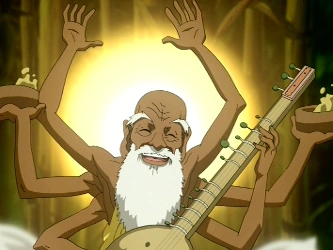
in the episode nightmares and daydreams, pathik appears in aang's nightmare with six hands, holding what appears to be a veena (a classical indian music instrument). this references the iconography of the hindu deity Saraswati, the goddess of wisdom and knowledge. the embodiment of divine enlightenment, learning, insight and truth, Saraswati is a member of the Tridevi (the female version of the Trimurti), one of the most respected and revered goddesses in the Hindu pantheon... and her likeness is used for a cheap laugh on a character who's already treated as a caricature.
that's bad enough on its own, but when you consider that guru pathik is the only explicitly south asian coded character in the entire show, it's downright insulting. for a show that took so many of its foundational concepts from south asia and hinduism and yet provided almost no desi representation in return, this is just rubbing salt in the wound.
Chakras
"chakra", meaning "circle" or "wheel of life" in sanskrit, refers to sources of energy found in the human body. chakra points are aligned along the spine, with energy flowing from the lowest to the highest point. the energy pooled at the lowest chakra is called kundalini, and the aim is to release this energy to the highest chakra in order to achieve spiritual enlightenment and consciousness.
the number of chakras varies in different religions, with buddhism referencing five chakras while hinduism has seven. atla draws from the latter influence, so let's take a look at the seven chakras:
Muladhara (the Root Chakra). located at the base of the spine, this chakra deals with our basest instincts and is linked to the element of earth.
Swadhisthana (the Sacral Chakra). located just below the navel, this chakra deals with emotional intensity and pleasure and is linked to the element of water.
Manipura (the Solar Plexus Chakra). located in the stomach, this chakra deals with willpower and self-acceptance and is linked to the element of fire.
Anahata (the Heart Chakra). located in the heart, this chakra deals with love, compassion and forgiveness and is linked to the element of air. in the show, this chakra is blocked by aang's grief over the loss of the air nomads, which is a nice elemental allusion.
Vishudda (the Throat Chakra). located at the base of the throat, this chakra deals with communication and honesty and is linked to the fifth classical element of space. the show calls this the Sound Chakra, though i'm unsure where they got that from.
Ajna (the Third Eye Chakra). located in the centre of the forehead, this chakra deals with spirituality and insight and is also linked to the element of space. the show calls it the Light Chakra, which is fairly close.
Sahasrara (the Crown Chakra). located at the very top of the head, this chakra deals with pure cosmic consciousness and is also linked to the element of space. it makes perfect sense that this would be the final chakra aang has to unblock in order to connect with the avatar spirit, since the crown chakra is meant to be the point of communion with one's deepest, truest self.
the show follows these associations and descriptions almost verbatim, and does a good job linking the individual chakras to their associated struggles in aang's arc.
Cosmic Energy
the idea of chakras is associated with the concept of shakti, which refers to the life-giving energy that flows throughout the universe and within every individual.
the idea of shakti is a fundamentally unifying one, stating that all living beings are connected to one another and the universe through the cosmic energy that flows through us all. this philosophy is referenced both in the swamp episode and in guru pathik telling aang that the greatest illusion in the world is that of separation - after all, how can there be any real separation when every life is sustained by the same force?
this is also why aang needing to let go of katara did not, as he mistakenly assumed, mean he had to stop loving her. rather, the point of shedding earthly attachment is to allow one to become more attuned to shakti, both within oneself and others. ironically, in letting go of katara and allowing himself to commune with the divine energy of the universe instead, aang would have been more connected to her - not less.
The Avatar State
according to hinduism, there are five classical elements known as pancha bhuta that form the foundations of all creation: air, water, earth, fire, and space/atmosphere.
obviously, atla borrows this concept in making a world entirely based on the four classical elements. but looking at how the avatar spirit is portrayed as a giant version of aang suspended in mid-air, far above the earth, it's possible that this could reference the fifth liminal element of space as well.
admittedly this might be a bit of a reach, but personally i find it a neat piece of worldbuilding that could further explain the power of the avatar. compared to anyone else who might be able to master only one element, mastering all five means having control of every building block of the world. this would allow the avatar to be far more attuned to the spiritual energy within the universe - and themselves - as a result, setting in motion the endless cycle of death and rebirth that would connect their soul even across lifetimes.
#atla#atla cultural influences#hinduism in atla#welp i thought this would be the last part but i ended up having more to talk about than i thought#so i'll save the book 3 inspirations for the next post#including my absolute favourite combustion man#and by favourite i mean kill it with fire why did you ever think this was okay to do writers
508 notes
·
View notes
Text
I’m not sure why grown women tapped into the spiritual world are so loyal to the Western corporate news media, ingesting these frequencies into their consciousness and homes at will. Because when you think about it, doing so has literally NEVER made us feel clear, feel good or feel better. What you will begin to realize is that if there is anything you REALLY need to know, you will know it when it’s time. But you don’t have to seek out the news or reserve any part of your life force to watching and listening. Being informed and knowing about nearly everything happening in the external world does not make you a “good person” as taught. Notice how your health, fitness, wellness, and intuition improves when you stop obsessively watching, scrolling, listening, ingesting, and inhaling Western news and its policies.
One of the roles for spiritual women at this time is to become more grounded, embodied, still, and simple…and from there, we can be in our magic and service. —India Ame’ye
100 notes
·
View notes
Text
A world without trans people has never existed and it never will.

Seriously just search (Trans History).
Here are some examples:
"Sumerian and Akkadian texts from 4,500 years ago document priests known as gala who may have been transgender. In Ancient Greece, Phrygia, and Rome, there were galli priests that some scholars believe to have been trans women.
Roman emperor Elagabalus (d. 222 AD) preferred to be called a lady (rather than a lord) and sought sex reassignment surgery, and in the modern day has been seen as a trans figure.
Hijras on the Indian subcontinent and kathoeys in Thailand have formed trans-feminine third gender social and spiritual communities since ancient times, with their presence documented for thousands of years in texts which also mention trans male figures. Today, at least half a million hijras live in India and another half million in Bangladesh, legally recognized as a third gender, and many trans people are accepted in Thailand.
In Arabia, khanith today (like earlier mukhannathun) fulfill a third gender role attested since the AD 600s.
In Africa, many societies have traditional roles for trans women and trans men, some of which survive in the modern era.
In the Americas prior to European colonization, as well as in some contemporary North American Indigenous cultures, there are social and ceremonial roles for third gender people, or those whose gender expression transforms, such as the Navajo nádleehi or the Zuni lhamana."
In conclusion. Being trans is not a fad and it isn't going anywhere just because some crazy religious nut jobs say we don't fit into their abusive hateful world views. We are here and always will be. So get used to it. 👋😘
#lgbtq#trans#transmasc#trans masc#transfem#transgender#trans woman#transgirl#lgbtqia#trans rights are human rights#trans rights
3K notes
·
View notes
Text

Hindu Fire God: Agni Deva Talon Abraxas
The Hindu fire god is known as Agni Deva. He is a masculine deity who embodies primordial fire, holy fire, or spiritual fire. Fire is the perfect metaphor for the transformation of unwanted patterns, situations, and personal characteristics. Fire is an expression of both light and heat. These are two fundamentals for the sustenance of life.
Fire Symbolism
Symbolic and physical fire have been associated with religious traditions around the world for ages. Fire means life and energy as well as destruction. Fire can take many forms in the universe including lightning, the rays of the sun, physical fire, and divine radiation. The fire element is one of the fundamental elements of nature in the Vedic Five element system (air, space, fire, water and earth).
Fire and the Five Elements
The Vedic five element system is similar to Chinese feng shui but developed separately in India. The five elements can be used to classify types of artwork, personalities, food and much more. Learn more about the Chinese and Vedic systems in Mantras and the Five Elements.
Origin of the Hindu Fire God
“Agni” is the Sanskrit word for “fire.” “Deva” is a masculine form of God; “Devi” would be a feminine form or goddess. According to Hindu folklore, fire was originally a force that was devouring everything on earth. Then the Creator (Brahma) modified fire so that Lord Agni would be a purifier rather than the destroyer of everything he touched.
Ayurvedic Medicine and Fire Mantras
In the Vedic healing tradition, fire mantras have been used to bring the fire element into the physical body for purification and balance. Fire mantras can also support the health of the liver and digestion. Some traditions view the liver as a physical place where old emotions and memories are held in the body. In addition, mantras to the fire element have traditionally been recommended for maintaining a healthy weight through the support of vigorous metabolism.
Agni Mantra to the Hindu Fire God
The lyrics to this mantra are “OM Agni Devaya Namaha.” OM is the primordial sound often viewed as the hum of the universe. OM focuses the mind and is often used at the beginning of mantras. Devaya means “I serve or give offerings to God.” Namaha means “I bow or I honor.” The meaning of this mantra can be translated as, “I give honor to God as the element of fire.”
Name Translation for Agni Deva
Agni Deva is primordial fire or the lord of fire, sometimes translated as the God of Fire. The word “agni” is further associated with the Latin word “ignis” meaning to ignite or light on fire. Agni Deva can be viewed as a messenger between man and the gods. This is because offerings through fire reach the higher spheres.
Role of Agni Deva in Hinduism
Agni dwells in every home and must be part of all forms of sacrifice and worship. Without Agni, the gods cannot be satisfied through rituals. Agni blesses every occasion including birth, marriage and death. It is Lord Agni who formed the sun and the stars.
24 notes
·
View notes
Text
Origin of Arjun's name
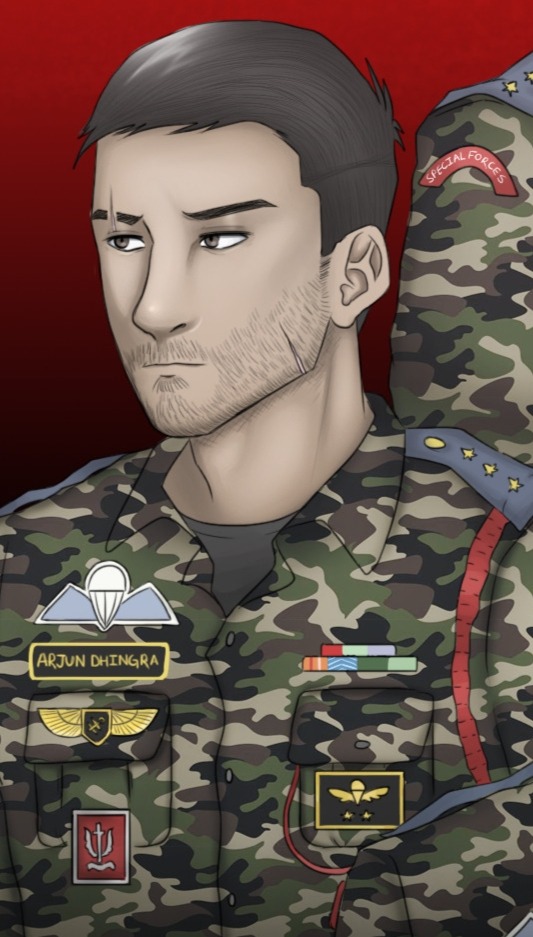
Arjun's name and respective codename itself came from the etymology of Mahabharata, the ancient epic of India.
Arjuna was the son of Kunti whose spiritual father was Indra Dev (the God of Lightning), but became the adopted son of King Pandu among his four sons (Yudhishthir, Bhima, Nakul and Sahadev). Arjun was depicted as a skilled archer from an early age, and played an important role throughout the campaign of the Mahabharata War.
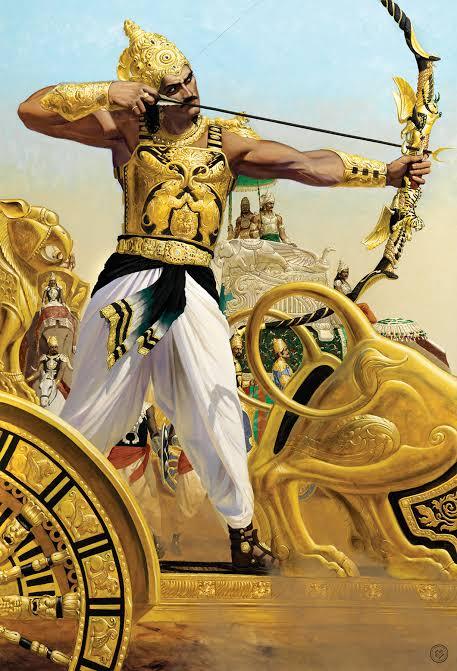
Arjun's name means to be "crystal clear, shiny and lustrous". In relation, it's about always being stuck to your aim and knowing what has to be done to hit the bullseye. Once the Captain finds a target, he'll do anything to fulfill it, even if it risks everything he had before. His aim towards it is "clear". He'd pick the gun, and fight. He'll not hesitate nor back off. He will hit the target.
His patch symbol is denoted as a "bow and arrow", which targets its desired aim. The Captain won't leave a single target behind, he'll eliminate it, destroy it, no matter what the cost.
#oc#oc background#oc names#original character#oc lore#my oc#indian oc#captain arjun#cod#call of duty#call of duty oc#cod mw#call of duty modern warfare#cod mw2#cod mw3#og mw timeline#reboot mw timeline
56 notes
·
View notes
Text
✧༺┆✦The Matriarchal Societies✦┆༻✩

Matriarchal societies, where women occupy primary power roles in political, social, and economic realms, have existed across various cultures and historical periods. Distinguished by matrilineal descent, communal decision-making, and significant female authority, these societies present alternative models of social organization.
Characteristics of Matriarchal Societies
Matrilineal Descent
A hallmark of matriarchal societies is matrilineal descent. Family lineage, property, and titles are inherited through the mother’s line, ensuring continuity and stability as women control familial and economic resources. Matriarchs play central roles in family organization, often making key decisions about marriage, property distribution, and household management.
Political Authority
Women in matriarchal societies frequently hold significant political positions such as chiefs, queen mothers, or council leaders. Their leadership is active and involves governance and decision-making. Community councils, typically composed of elder women, guide community policies and resolve disputes, ensuring that women's perspectives are central to governance.
Economic Control
Women typically control property and land, managing and passing them down to their daughters. This economic power underpins their social authority and community status. They oversee the allocation of resources within the community, ensuring equitable distribution and the well-being of all members.
Cultural and Spiritual Roles
Women often serve as spiritual leaders, shamans, or priestesses, conducting important rituals and ceremonies. As custodians of spiritual knowledge and cultural traditions, women preserve and transmit cultural heritage through storytelling, education, and ritual practices, maintaining the community's identity and values.
Historical and Contemporary Examples
The Hopi (Native Americans)
The Hopi people, residing in north-eastern Arizona, follow a matrilineal system where clan membership and inheritance pass through the female line. Women own the land and homes, and they play significant roles in agricultural activities. Female elders influence decision-making processes, particularly regarding community welfare and cultural traditions.
The Ashanti (West Africa)
The Ashanti people of Ghana practice a matrilineal system in which lineage and inheritance pass through the mother's line. The Queen Mother holds significant political influence, including the authority to select the Asantehene (king). Women are key figures in trade and local markets, controlling the distribution of goods and resources.
The Baganda (Uganda)
In Buganda, a kingdom within Uganda, women hold crucial roles in the matrilineal descent system. The Namasole (queen mother) has substantial political influence and advises the Kabaka (king). Women manage household economies, control land inheritance, and are active in agricultural production, ensuring the community's sustenance.
The Mosuo (China)
Located near Lugu Lake in the Yunnan and Sichuan provinces, the Mosuo people practice a unique form of matrilineal descent. Extended families live in large households managed by the matriarch. The Mosuo have "walking marriages," where men visit their partners at night and return to their maternal homes in the morning. Children remain with their mothers, and maternal uncles play significant roles in their upbringing. Women control the household economy, manage agricultural activities, and are involved in local trade and tourism.
The Khasi (India)
The Khasi people of Meghalaya in north-eastern India follow a matrilineal system where property and family names are inherited through the female line. The youngest daughter, known as the "Ka Khadduh," inherits the ancestral property and is responsible for taking care of the elderly parents. Khasi women play central roles in household management, local commerce, and cultural rituals.
The Igbo (Nigeria)
Among the Igbo people of Nigeria, certain communities practice matrilineal descent, particularly in the inheritance of property and titles. Women are influential in trade and local markets, actively participating in community decision-making processes. Female-led organizations and associations play crucial roles in maintaining social order and cultural traditions.
The Minangkabau (Indonesia)
The Minangkabau, located in West Sumatra, are the world's largest matrilineal society. Property and family names are inherited through women. Women manage the household and family inheritance, while men handle external political relations. The role of "Bundo Kanduang" (the revered mother) symbolizes female authority and wisdom. Women play central roles in cultural ceremonies, such as weddings and funerals, reinforcing their social status and authority.
The Tuareg (Sahara Desert)
The Tuareg people, living in the Sahara Desert across Mali, Niger, Algeria, and Libya, practice matrilineal descent. Property and family tents are inherited through the female line. Women have significant autonomy and can initiate divorce. They control family wealth and manage household affairs. Women are custodians of the family's history and traditions, passing down cultural knowledge through oral traditions and music.
The Trobriand Islanders (Papua New Guinea)
The Trobriand Islanders of Papua New Guinea follow a matrilineal system where lineage and inheritance are passed through the mother’s line. Women control the distribution of yam, a staple crop that signifies wealth and social status. Female leaders, known as "dauk," play essential roles in community decision-making and cultural rituals.
The Iroquois Confederacy (North America)
The Haudenosaunee (Iroquois) society, located in the north-eastern United States, is matrilineal, with clans led by elder women known as Clan Mothers. Clan Mothers have the authority to nominate and depose male leaders (sachems). They play a vital role in maintaining the Great Law of Peace, which governs the confederacy. Women are central to agricultural practices, growing the "Three Sisters" crops (corn, beans, and squash), which are crucial to the community's sustenance.
Modern Implications and Interpretations
Matriarchal societies offer models of gender equality and demonstrate that societies can thrive with women in central roles. These societies challenge the notion that patriarchal structures are necessary for social stability. The emphasis on matrilineal descent and female authority helps preserve cultural traditions, ensuring the continuity of community identity. Women's control over resources often leads to more sustainable and equitable economic practices, benefiting the community as a whole.
Challenges and Misconceptions
Common misconceptions suggest that matriarchal societies simply reverse the power dynamics of patriarchy, with women dominating men. However, these societies often emphasize balance, cooperation, and mutual respect between genders. Patriarchal societies may resist the idea of matriarchy, viewing it as a threat to established power structures, leading to the marginalization and misrepresentation of matriarchal communities.
Matriarchal societies provide valuable insights into alternative social structures where women hold central roles in political, social, and economic spheres. These societies demonstrate the viability of matrilineal and matriarchal systems, offering models for more balanced and equitable gender dynamics. Understanding these societies broadens perspectives on power distribution, gender roles, and cultural practices, challenging the dominance of patriarchal paradigms in historical and contemporary contexts. They highlight the potential for diverse forms of social organization that prioritize cooperation, sustainability, and equality.

26 notes
·
View notes
Text
What are Nuns?
Nuns are a member of a religious community of women, especially a cloistered one, living under vows of poverty, chastity, and obedience.
They dedicate their lives to religious observance. Most nuns spend their time praying or meditating and doing service work in their communities.
Nuns in different religions 👇

Nuns in Christianity.
Nuns and sisters in Christianity belong to various religious institutes, each with its own charism. Both take vows, pray, do religious services/contemplations & live modestly. Nuns traditionally recite the full Divine Office in church throughout the day, while lay sisters perform maintenance or errands outside the cloister. Externs, who live outside the enclosure, may also assist with tasks.
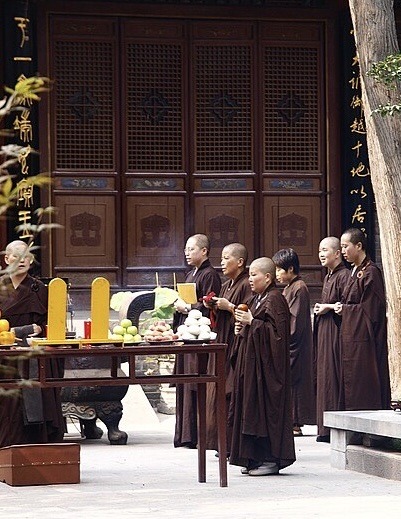
Nuns in Buddhism.
Buddhist nuns, called bhikkhunis, mostly live under disciplined & mindfulness. They share important vows, offer teachings on Buddhist scriptures, conduct ceremonies, teach meditation, offer counseling, & receive alms. Bhikkhunis are expected to go against the materialistic values, focusing instead on spiritual aims outlined by the Buddha. They adhere to specific precepts guiding their behavior/lifestyle, which vary based on tradition & monastery.
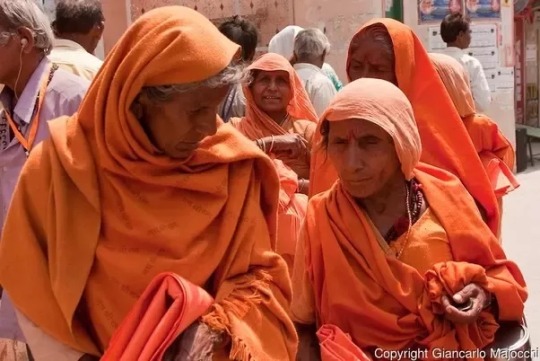
Nuns in Hinduism.
Hindu nuns, also called sanyasini, sadhavi or swamini, practice a monastic life of religious devotion by living simple lives of study, meditation & prayer. Some nuns seclude themselves in Hindu communities while others wander from place to place spreading the teachings of their faith, all their actions are directed as a service to Brahman. Hinduism teaches followers to respect these nuns for renouncing material things.

Nuns in Taoism.
Taoist nuns typically lived in temples known as guan, Celibacy was associated with early Taoist schools. They are solitary practitioners who take modesty & Clarity. In the Shangqing School, Taoist nuns are called nü daoshi or nüguan. their daily schedule included chanting scriptures, community work, and individual practices, including inner alchemical exercises.
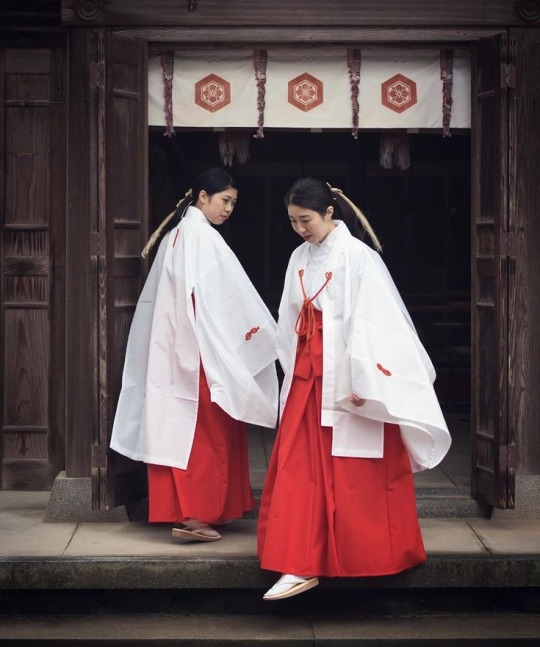
Nuns in Shintoism.
Shinto nuns are called miko, or shrine maiden, they’re young nuns who work at shrines & heavily worship Shinto Kami (gods). Miko were once likely seen as shamans & priestesses but they are understood in modern Japanese culture to have an institutionalized role in daily life, trained to perform tasks, ranging from sacred cleansing to performing the sacred Kagura dance.
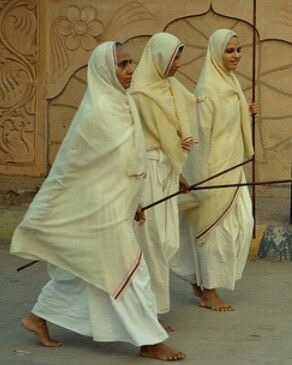
Nuns in Jainism.
Jain nuns are known as Aryika, or as Sadhvi. Aryikas (sadhvis) mostly meditate near Vrindavan, India. In Samavasarana of the Tirthankara, aryikas sit in the third hall. The Aryikas lead a simple life, with few possessions, and consider the world their family. They live in small groups and dedicate their days to meditation, study, carefulness & extreme compassion.
#religion#religions#nun#nuns#christianity#buddhism#hinduism#Taoism#Daoism#Shinto#shintoism#Jainism#bhikkhunis#bhikkhuni#sanyasini#sadhavi#swamini#nü daoshi#nüguan#miko#Aryika#desiblr#lotus-list
25 notes
·
View notes
Text
it is with an extremely heavy heart that i share the news with all of you regarding the passing of actress and animal activist olivia hussey eisley.
from her official instagram page:


oliviahusseyeisley:
It is with profound sadness that we announce the passing of Olivia Hussey Eisley, who went peacefully at home surrounded by her loved ones on December 27th.
Olivia was a remarkable person whose warmth, wisdom, and pure kindness touched the lives of all who knew her.
Born on April 17th, 1951 in Buenos Aires, Argentina. Olivia lived a life full of passion, love, and dedication to the arts, spirituality, and kindness towards animals.
Olivia leaves behind a loving family— her children, Alex, Max, and India, her husband of 35 years David Glen Eisley, and grandson, Greyson, and a legacy of love that will forever be cherished in our hearts. As we grieve this immense loss, we also celebrate Olivia’s enduring impact on our lives and the industry.
We thank you for your thoughts and prayers during this difficult time and ask for privacy as we mourn the loss of a truly special soul.
known for her roles as juliet in the 1968 film ‘romeo and juliet’ and jess bradford in the 1974 film ‘black christmas,’ olivia’s loss is felt by fans of all genres across the globe.
11 notes
·
View notes
Text
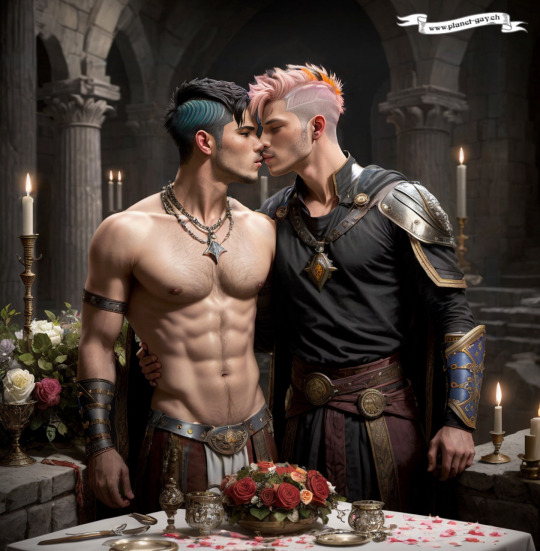
Historical and Modern Perspectives on Same-Sex Unions
Same-Sex Unions in Antiquity Even in antiquity, there were cultures that recognized same-sex relationships in various forms. Although formal marriages between same-sex partners are rarely documented, numerous examples of love unions and symbolic partnerships exist.
Ancient Greece: In Greek culture, same-sex relationships, particularly between men, were widespread and often socially accepted. These relationships, known as pederasty, had an educational character, where an older man (the Erastes) took a younger man (the Eromenos) under his wing. These connections were often marked by love and affection and played an important role in the education and social life of Greek cities.
Rome: Hadrian, who ruled from 117 to 138 AD, is an example of a same-sex relationship in Rome. Hadrian had a famous relationship with Antinous, a young Greek man. This relationship was so significant that Hadrian honored Antinous's memory in an extraordinary way after his death in 130 AD.
Mesopotamia: In ancient Mesopotamian cultures, such as the Sumerians and Assyrians, there is evidence of the acceptance of same-sex relationships. Texts and inscriptions suggest that such relationships were part of the social fabric, although formal marriages are not documented.
India: In ancient India, there are also indications of the acceptance of same-sex relationships. In Hindu mythology, there are stories of gods and heroes in same-sex relationships. This spiritual and cultural acceptance shows that such unions were recognized in certain contexts.
Indigenous Cultures of North America: Many indigenous cultures in North America had the concept of "Two-Spirit" individuals, who possessed both male and female qualities. Such individuals could assume ceremonial roles and enter into same-sex partnerships that were considered spiritually and socially acceptable.
Modern Developments: Marriage for All In modern times, the social and legal recognition of same-sex partnerships has significantly improved. Many countries have enacted laws granting same-sex couples the right to marry and the associated rights and obligations.
Switzerland: On July 1, 2022, Switzerland's "Marriage for All" law came into effect, granting same-sex couples the same rights as heterosexual couples. This was the result of a referendum in September 2021, where the Swiss population overwhelmingly voted in favor of legalization.
Worldwide: In addition to Switzerland, many other countries have previously legalized marriage for same-sex couples, including:
Netherlands (2001): The Netherlands was the first country in the world to introduce same-sex marriage. Belgium (2003): Belgium followed shortly after the Netherlands and legalized same-sex marriage. Spain (2005): Spain was one of the first major European countries to allow same-sex marriage. Canada (2005): Canada legalized same-sex marriage nationwide. South Africa (2006): South Africa became the first country in Africa to permit same-sex marriage. Norway (2009), Sweden (2009), Portugal (2010), Iceland (2010), Argentina (2010), Denmark (2012), Uruguay (2013), New Zealand (2013), France (2013), Brazil (2013), England and Wales (2014), Luxembourg (2015), Ireland (2015), USA (2015), Colombia (2016), Finland (2017), Germany (2017), Australia (2017), Austria (2019), Taiwan (2019), Costa Rica (2020). The legalization of same-sex marriage in these countries was often the result of decades of activism and social change, leading to greater acceptance and legal equality.
From antiquity to the present, same-sex unions and partnerships have a long and often complex history. While symbolic marriages and stable partnerships existed in antiquity, the legal and social recognition of same-sex marriages is an achievement of modern times. Today, many countries, including Switzerland, have introduced "Marriage for All," taking a significant step toward equality and acceptance.
Text supported by GBT-4o Image generated with SD1.5, overworked with manual inpainting and composing
22 notes
·
View notes
Note
can you explain what "cultural astrology" is?
it's essentially astrology that is employed on a wide scale to designate roles to individuals in the existing hierarchy of their culture. The circumstances of your birth are seen as determining not just your personality, but also your prospects socially and financially. people born under perceived unfavorable conditions are treated as pariahs, and any abuse or misfortune they experience is seen as inherently justified (this can extend as far as justifying honor killings). marriage and job prospects are heavily influenced by astrological tellings, and parents/communities will often deter their children from pursuing the lives they want due to this. as you would assume, the system generally exists to reproduce the social order manufactured by things like class while obscuring class as a variable by insisting that it is the universe that justifies this order. they typically have arbitrators (in the case of hinduism, it's typically a pandit but like I also feel like I should note that "astrology expert" is a huge grift for tons of different people in india) that make so much money off of their perceived insights and spiritual blessings/rituals meant to undo bad energy and whatnot.
21 notes
·
View notes
Text
No matter what you may be going through, I can honestly say that when you become devoted to weaving the great beauty of life, tantra, into your daily life, your life naturally and instinctively starts to transform. The fear, doubts, hopelessness, or anxiety starts to fall away. Beauty is truth-- a deeply internal spiritual experience, a cleansing from the field of love. When you allow yourself to plug into beauty, this electromagnetic field, the spark of divine love and aliveness that has been powering and populating the entire planet for eternity, you create more and more energy and your body changes for the brighter. What else you could ever desire other than knowing beauty in the present moment? With divine love, no matter what you are doing, life becomes more energy-giving than energy-taking.Whether making a fresh juice for your family, giving yourself a breast massage, cleaning your floors, picking up your child from daycare, sitting down relaxed while eating a meal, or working behind a computer, taking a moment to calibrate to true beauty in the present moment changes you into a more advanced version of yourself overtime. Slow down. Take a breath. Give yourself over to the unknown. Taste your food. Relax more. Check your posture. Be soft in your tailbone. Think of fuchsia flowers. All of this is true beauty. I’m not saying that you should try to remove all pain from your life because doing so would be inauthentic and pain, when present, plays an important role in our bodies and lives. I mainly want you to know that you have so more capacity for new beautiful narratives but better, energy-giving thoughts and actions are needed in the meantime. Then all the patterns, worries and thoughts that have been making you sad, regretful, afraid, obsessive, or anxious begin to dissolve into an offering of fuchsia flowers. Care enough about your body to be responsible for orienting your energy towards bliss at any given moment. This is true beauty. This is living in divine love. -India Ame'ye, Author
65 notes
·
View notes
Text
Pigs, boars, and pigmen in the cultural and symbolic frameworks of Chinese and other Asian cultures.
In Chinese Culture
Zodiac Significance
The pig is one of the twelve animals in the Chinese zodiac, representing prosperity, wealth, honesty, and happiness. People born in the Year of the Pig are often considered to be generous, easygoing, and good-natured.
The pig is associated with abundance and good fortune due to its connection with farming and agriculture.
Symbol of Prosperity and Fertility
Pigs were historically linked to wealth in agrarian societies, as they symbolized food security and economic stability.
Their association with fertility stems from their ability to reproduce rapidly, making them a metaphor for abundance in life and resources.
Spiritual and Mythological Roles
Zhu Bajie, a prominent character in the classic Chinese novel Journey to the West, is a pigman. He represents both human flaws like laziness and gluttony and the potential for redemption through dedication and teamwork.
Pigs often appear in Chinese folklore as symbols of moral lessons, combining humor with deeper spiritual or social commentary.
Festive Symbolism
Pigs are a popular motif during Lunar New Year celebrations, especially in the Year of the Pig. They symbolize good luck, prosperity, and family unity.

In Other Asian Cultures
Japan
In Mythology and Folklore
Wild boars (inoshishi) symbolize courage and determination in Japanese culture. They are featured in samurai lore and often represent warriors' bravery.
The boar is also one of the twelve animals in the traditional Japanese zodiac, carrying similar connotations to the Chinese zodiac.
Deity Associations
The Shinto deity Wake no Kiyomaro is associated with wild boars, which are considered his divine messengers. This connection underscores the sacredness of boars in Japanese traditions.
Folklore and Art
Boars are depicted in various artworks and traditional crafts as fierce yet honorable creatures, embodying nature's raw power.

Depiction of wild boars (inoshishi) inspired by traditional Japanese art, influenced by the aesthetics of Japanese woodblock prints.
India
Boars in Hindu Mythology
The boar is significant in Hindu mythology as the third avatar of Vishnu, known as Varaha. In this form, Vishnu saves the Earth (personified as Bhudevi) from chaos, reinforcing themes of cosmic order and protection.
The boar is a symbol of strength, devotion, and the ability to overcome adversity.
Cultural Depictions
The Varaha avatar is celebrated in temples, sculptures, and rituals, highlighting the sacredness of boars in Hindu cosmology.

The Hindu deity Varaha, the boar-headed avatar of Vishnu, rescuing the Earth goddess Bhudevi or Bhumi from the cosmic ocean.
Southeast Asia
Pigs in Rituals and Traditions
In cultures such as those of the Philippines and Indonesia, pigs are integral to ritual sacrifices and community feasts, symbolizing wealth, social status, and communal harmony.
In traditional Balinese ceremonies, roasted pigs (babi guling) are offerings to deities and ancestors, underscoring their spiritual significance.
Folklore and Totemism
Certain indigenous groups in Southeast Asia regard pigs as totemic animals, embodying ancestral spirits or serving as clan symbols.
Korea
Dream Symbolism
In Korean culture, dreaming of pigs is considered highly auspicious, signifying impending wealth and good fortune. This belief stems from their historical association with abundance.
Folklore and Superstition
Pigs are seen as bringers of luck and are commonly referenced in folktales and proverbs to teach moral lessons.
Shared Symbolism Across Asia
Duality of Pigs Pigs are often symbolic of both positive traits like abundance and negative traits like greed or laziness. This duality reflects their complex integration into human societies.
Connection to Agriculture Their role in agrarian economies and sustenance has made them enduring symbols of fertility and prosperity across the continent.


#pig#boar#pigs#hog#pigs in mythology#boars in mythology#pig god#boar god#asian culture#varaha#inoshishi#chinese zodiac#year of the pig#pig man#pigman#boar man#wild boar#chatgpt#deep ai#dall e
5 notes
·
View notes
Text
Queer Glossary of Muslim/Islamic World:
This is a list of gender & sexuality related terms, used in Muslim/Islamic World.
Mithli/Mithly - postmodern Arabic term for queer folks
Mithliya - feminine form word “Mithli”, refers to lesbians, sapphics, queer women
Kwiir/Kwiiriya - arabized version of word queer
Mukhannas/Mukhannath/Mokhannas/Mukhanathan/Mukhannathin - archaic Arabic term for trans woman, trans femme, individuals of non-normative gender and/or sexuality
Mukhannith - classical Arabic term for transsexual woman
Mutarajilla/Mutarajil/Mutarajilat - archaic Arabic term for masculinized female, trans male, trans-masculine. It is masculine equivalent of word “Mukhannath”
Boyah/Boyat - a term used in persian gulf states to describe masculine women,butch, & AFAB gender non-confirming
Mustargil/Mustarjil/Mustarajil/Mustarajjila- vernacular term for trans male/trans-masculine folks in Marsh Arab tribe
Mabun/Maabun - archaic term for an eunuch homosexual male who take passive role in Islamicate World.
Khanith/Khaneeth/Xanith/Makhanith - vernacular term for AMAB transgender, gender non-confirming, queer in Arabian Peninsula. The Khanith is also a third gender/sex community of Arabian peninsula.
Khuntha/Khunsha - archaic Arabic term used to describe intersex & ambiguous gender individuals in Muslim World.
Khuntha Mushkil - term for non-binary & gender non-confirming intersex individuals.
Khasi/Khasee - archaic term for eunuchs in Arabic/MENA Islamic empires
Khusra/Khusray/Khusaray/Khusara - Pejorative word for eunuch transgender, gender non-confirming individuals in Pakistan & Northernmost India. The word derived from Punjabi
Murat/Muraat/Morat/Moorat - vernacular term for transgender, eunuch, gender-diverse folks in Pakistan. It is also used in some parts of Afghanistan.The word Murat is itself a portmanteau of Mard (meaning man) and Aurat (meaning woman)
Hijra/Hijre/Hijjara/Hijarah/Hijada – all-encompassing term for gender & sexual diverse folks in the Indian subcontinent. The term includes trans femme, mtf transsexual, masculine woman, effeminate gay man, cisgendered drag queen, androgyne, transvestite, queer, eunuch, non-binary & intersex individual
Khawaal - term for MTF transsexual, transvestite & effeminate dancers in Pre-mordern Egypt.
Köçek - archaic term for effeminate male, gender fluid dancers in Ottoman society. The term also refers to feminine boys regardless of their sexual orientation. “Cengi” is female counterpart of Köçek.
Khawaja sara/Khwaja sara/Khwaja sira/Khawaja sira/Khwajasera/Khwaja saray - Persian archaic term used to describe a range of gender identities, including trans woman, gender fluid, effeminate (mukhannas), eunuch, trans-masculine, and trans-feminine individuals in South Asia. It goes beyond being just a gender or sexual identity; it is also associated with gender spirituality. This term was historically used to designate trans and non-binary individuals in Medieval Muslim empires. Nowadays, the term khawaja sara/khwajasara has become a subset of Hijra
Kothi - pejorative slang term for effeminate men, gay transvestites, drag queen, passive homosexuals in Indian subcontinent. In pakistan, kothis are referred as “Zenana”.
Panthi - slang term for dominant, hard, masculine gay & bisexual male in Bangladesh, Pakistan & India. This term derived from to Hijra Farsi or Ulti Bhasha
Parikh/Paarikh - slang term refers to boyfriend & husband in Bangladesh. This word is mostly used among LGBTQ+ population
Dohpartaa or Dohpartah - informal, slang term for bisexual in Bangladesh & West Bengal. The word derived from the Hijra Farsi or Ulti language.
Mamsuh - Arabic term for intersex person, who is agender or genderless.
Hum Jins, Hum jinsi, Ham-jense, Ham-jens – homosexual in Urdu, Persian, Tajik language
Ham-jins bâz/Ham-jens bâz – a derogatory term for gays in Farsi-speaking communities.
Ham-jens-garâ - slurr for homosexual in Farsi
Ham-jins garo - pejorative term for homosexuals in Tajikistan
Do jens garâ/Doh jense garâ - term for bisexual in Farsi
Mak Nyah - term for transgender woman, MTF transsexual in Malaysia. The term “Mak Nyah” is widely used among trans women, mukhannath/ trans-feminine folks. The term was first coined in late 1980s.
Pak Nyah - informal,vernacular term for trans men in Malaysia.
Waria - Indonesian term for AMAB trans folks in Indonesia. Warias are considered as third gender in Indonesia.
Priawan - vernacular term for trans-masculine in Indonesia.
Bissu - a term used to describe non-binary or two spirit identity in Bugie Tribe of Indonesia
Burnesha - vernacular term used to describe trans-masculine,butch in Ottoman empire of balkan & Albania.
Chokri/Chukri - term for drag queens, transvestites who are associated with “Alcap gaan”, a sufi folk music. This cross-gender phenomenon can be found in Bangladesh & West Bengal. Chukri individuals may identify as straight, gay, bisexual, or trans. Muslim Chukris are devotee of sufi saint Madar Pir/Madari Pir.
Zenana/Jenanah - vernacular term for effeminate male,MTF transvestite in Bangladesh,Pakistan,Northern India.The term Zenana derived from Urdu or Farsi, which means feminine.
Bachaa posh - vernacular term for FTM crossdresser, trans-masculine in Afghani dialect
Bacha Bareesh - pejorative vernacular term for effeminate boy, passive homosexual,transgender folks in Afghanistan. Bacha Bareesh are effeminate boys,MTF drag queens who take part in Bacha bazi.
Bacha Nagma - a term used for sufi transvestite or drag dancers in Kashmir.
Gej – non-derogatory term for gays in Balkan regions. It is used in Bosnia & Herzegovina, Albania, Kosovo, Serbia, Macedonia, Romania.
Dygjinishëm - Albanian term for bisexual
142 notes
·
View notes